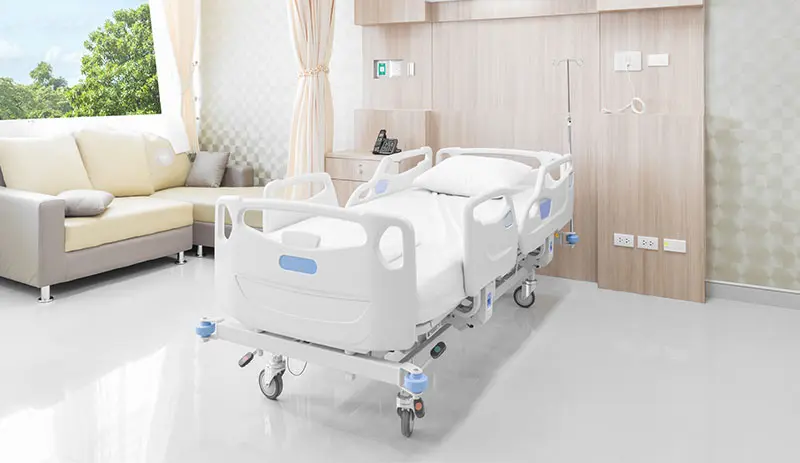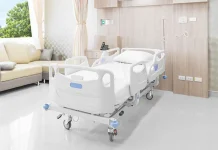IUVA Healthcare/UV Working Group
Troy Cowan, director, Vision Based Consulting
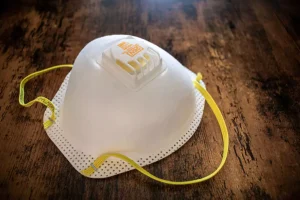 The N95 webinar was designed to get the pulse of the UV industry on N95 decontamination and provide feedback to the Food and Drug Administration on its Emergency Use Authorization (EUA) process for reviewing and approving UV N95 decontamination applications.
The N95 webinar was designed to get the pulse of the UV industry on N95 decontamination and provide feedback to the Food and Drug Administration on its Emergency Use Authorization (EUA) process for reviewing and approving UV N95 decontamination applications.
Upon analyzing the webinar materials and resulting Q&As, three uncertainties stood out as complicating factors in testing UV decontamination processes under current EUA requirements:
- Lack of a standardized surrogate for SARS-CoV-2 efficacy testing
- Uncertainty about the need to test the enclosed, internal filter layers of the mask, in addition to the exterior and interior (exposed and touchable) surface layers
- Lack of an inoculation protocol for where and how test masks were to be dosed for testing
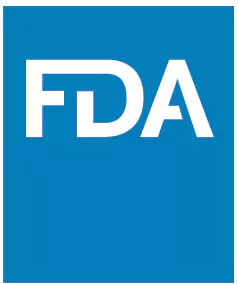 These issues were presented, along with suggested solutions, in a white paper1 for the FDA’s consideration, submitted on Sept. 23.2 That same day, IUVA received a positive response from FDA’s Office of Health Technology #4: Surgical & Infection Control Devices (OHT4) within the Center for Devices & Radiological Health. The FDA’s response included a request for a conference call to discuss the paper.
These issues were presented, along with suggested solutions, in a white paper1 for the FDA’s consideration, submitted on Sept. 23.2 That same day, IUVA received a positive response from FDA’s Office of Health Technology #4: Surgical & Infection Control Devices (OHT4) within the Center for Devices & Radiological Health. The FDA’s response included a request for a conference call to discuss the paper.
On Oct. 9, senior FDA scientists and members of IUVA’s COVID-19 Task Force and Healthcare/UV Working Group held the first of what is planned to be several calls, resulting in a collaborative information exchange. One immediate outcome was an invitation for IUVA to join the FDA’s Network of Experts, which is now being explored.
IUVA would like to express its thanks and gratitude to the OHT4 management and staff for their prompt and welcoming response to its white paper. IUVA looks forward to continued discussions with the FDA on UV decontamination technologies, science and capabilities.
UV’s Rapid Growth in Response to COVID-19 Highlights Three Key Issues
Since the pandemic’s emergency declaration, the UV healthcare industry has been growing almost exponentially, both in increased sales of current products and numbers of new products hitting the market. As an example, a recent query of Amazon for “UV Disinfection” brings up ~1,000 products.3 This exponential growth brings at least three key topics to mind that bear watching and thoughtful discussion.
Infection pathway uncertainties are a problem: Fundamentally, it is known that decontaminating with UV works. This has been clearly demonstrated in the lab for many common pathogens important to humans and agriculture. How well it works depends on the infection pathway, how it’s applied and where. To date, the infection pathway of interest (or modes of transmission) for COVID-19 has been touched surfaces, and this is where most of the UV device growth has been.
While surface transmission is believed to be significant, new data affirms COVID-19’s primary pathway is airborne aerosols.4 This is leading to renewed, heightened interest in UV air decontamination technologies, e.g., retrofitting upper air UV into buildings, embedding UV inside HVAC systems, and implementing “safer” UV systems that can be run while people are present (i.e., 222nm far-UV units5). There were those advocating the airborne pathways last spring6, but were people listening? Certainly, surfaces are still an issue, but which ones? Big box store shelves? Restaurant tables and chairs? High-touch surfaces in healthcare settings? School desks and chairs?
The right solution depends on identifying the right pathway. To be effective, people need to be aware of what are the biggest risks and where they occur.
Regulating the UV market is a challenge: Articles, forums and panels at IUVA conferences have discussed this issue since 2016. The online query for “UV Disinfection” quickly brought up more than 1,000 items, some of which were touted as “EPA Approved.” That is untrue: EPA does not review the efficacy of any UV devices.7
The demand for UV products has increased calls for dramatic new controls, some even going so far as to call for “UV Police” to control the situation.8 Really? That might be necessary, but what laws would they enforce? The federal regulators (EPA, FDA, et al.) have respectfully declined to take an aggressive proscriptive approach, in large part due to OMB guidance, which encourages “Federal agencies to benefit from the expertise of the private sector, … and minimize reliance on government-unique standards where an existing standard would meet the Federal government’s objective.”9
To date, the most visible enforcement actions have been taken by the Federal Trade Commission, such as issuing warnings to firms for false and misleading advertising that could result in civil court action if not heeded.10
So, the ball is in our court, if we want to play. What it would take was discussed at length at the January 2020 IUVA/NIST workshop on “UV Disinfection Technologies & HAIs,”11 on the conference floor, in the workshops and around the tables. What came out was the need for a system of national and international measurement standards, covering those essential practices and protocols required to accurately and reliably measure:
- UV lamp and luminaire (device) irradiance
- Antimicrobial efficacy of UV devices
- UV transmittance and absorption of surfaces and materials
- UV dose curves and action spectra that are pathogen and wavelength specific
Also needed are standardized methods for accurately and reliably calibrating UV irradiance measurement systems used in these processes; reporting to capture, distribute and catalogue these measurements; and definitions for the terminology and measurement systems used in these reports.
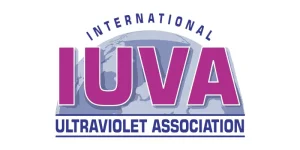 While the IUVA is not a standards-setting organization, it can and does work with many that are (e.g., IES, ASHRAE, ISO), and will continue to do so. The standards named above would form the basic foundations for measurement across all sectors that might use UV (government, industry, academia, healthcare, hospitality, transportation, etc.), something dearly needed to have a credible industry with enforceable guidelines.
While the IUVA is not a standards-setting organization, it can and does work with many that are (e.g., IES, ASHRAE, ISO), and will continue to do so. The standards named above would form the basic foundations for measurement across all sectors that might use UV (government, industry, academia, healthcare, hospitality, transportation, etc.), something dearly needed to have a credible industry with enforceable guidelines.
Stay the course, despite the coming market roller coaster: The shift to treating COVID-19 as an airborne aerosol is retracing what happened in the 1940s and ’50s, when UV was used to fight tuberculosis.12
Will using UV to prevent COVID-19 also fall out of favor and fade away as it did when safe and efficacious vaccines were found for TB, replacing UV-based prevention and making it seem too costly?13
If so, what comes next? History also points to the need to continue prevention. If UV operations had been maintained, who knows if there would have been the same degree of polio problem or issues with Legionnaire’s disease.
We just need to continue the basic fight, whether it be against HAIs and MDROs, or preparing for and responding to the next superbug.14 The historic infection loads being placed on hospitals and medical facilities by COVID-19 is the classic spawning pool for such a bug. Another new superbug event will happen. Will we be ready?
Bottom line: Team play wins
How do we respond to these issues? How can we get out in front of this game? Teaming – through interpersonal and interorganizational collaboration.
- Seek win-win collaborations with related industry partners and associations to build from and leverage each other’s strengths, as with Illuminating Engineering Society (IES) and others to follow soon.
- The industry must try and stay ahead of the ever-evolving infection pathways by teaming with healthcare providers and medical organizations that see it first. Support the efforts like those at Yale and the new IUVA Task Force on Far UV-C technologies, now being formed.
- Get out in front of the regulatory issues by working hand-in-hand with the regulators, who are charged to “promote federal agency participation in standards bodies to support the creation of standards that are useable by federal agencies” by OMB Circular A-119,15 as we’re doing with NIST, FDA and others.
All of these efforts are very challenging and exciting. There’s no doubt 2021 will be a transformative year for the UV marketplace.
Through the IUVA Healthcare/UV Working Group, endeavors are being made to promote the acceptance of UV disinfecting technologies as a credible, valued part of environmental management throughout the healthcare industry. In this column, the UV community will be updated on these efforts and the latest information on UV technology as it pertains to the healthcare industry.
Contact: Troy Cowan, troy@visionbasedconsulting.us
References
- Cowan, et al; “FDA N95 Mask Emergency Use Authorization Requirements Questions for the FDA on the Requirements for UV Testing,” September 2020. (www.iuva.org)
- Cohen to Ashar; an email dated Sept. 23rd, Subject:” Questions on FDA’s EUA Requirements for N95 Mask Decontamination with UV” (www.iuva.org)
- Amazon.com, results of a basic query for “UV Disinfection” performed on 28 October 2020 @ 10:28amET
- Klompas M, Baker MA, Rhee C. Airborne Transmission of SARS-CoV-2: Theoretical Considerations and Available Evidence. JAMA. 2020;324(5):441–442. doi:10.1001/jama.2020.12458 (https://jamanetwork.com/journals/jama/fullarticle/2768396?utm_source=silverchair&utm_campaign=jama_network&utm_content=covid_weekly_highlights&utm_medium=email)
- R. Simons, E. Blatchley III, and K. Linden, “Far UV-C in the 200 – 225 nm range, and its potential for disinfection applications,” July 2020, IUVA’s website (https://iuva.org/resources/covid-19/Far%20UV-C%20in%20the%20200%20_%20225%20nm%20range,%20and%20its%20potential%20for%20disinfection%20applications.pdf)
- Zhiming He, Foshan, “An update on the situation in China”, a video presentation to 2020 IUVA America’s Conf, March 10, 2020-10:30am
- US Environmental Protection Agency, Compliance Advisory “What You Need to Know Regarding Products Making Claims to Kill the Coronavirus Causing COVID-19,” May 2020 (https://www.epa.gov/sites/production/files/2020-05/documents/cornavirus-compliance-advisory.pdf )
- Randy Reid, “Who will be the UV Police?”, Design Lighting – the Magazine, Oct 19, 2020 (https://designinglighting.com/2020/10/19/who-will-be-the-uv-police/)
- US Office of Management and Budget (OMB); OMB Circular A-119: Federal Participation in the Development and Use of Voluntary Consensus Standards and in Conformity Assessment Activities,“ January 22, 2016 (https://www.whitehouse.gov/sites/whitehouse.gov/files/omb/circulars/A119/revised_circular_a-119_as_of_1_22.pdf)
- US Federal Trade Commission, Memorandum to Center for New Medicine/Perfectly Healthy, Subject: “Unapproved and Misbranded Products Related to Coronavirus Disease 2019,” May 11, 2020 (https://www.ftc.gov/system/files/warning-letters/fda-covid-19-letter-center_for_new_medicine.pdf)
- IUVA/NIST Joint Workshop, “Workshop on Ultraviolet Disinfection Technologies & Healthcare Associated Infections: Defining Standards and Metrology Needs,” Jan 14-15, 2020, Wash., DC (https://www.nist.gov/news-events/events/2020/09/workshop-ultraviolet-disinfection-technologies-healthcare-associated)
- Will Stone, “Coronavirus Sparks New Interest In Using Ultraviolet Light To Disinfect Indoor Air”, as heard on NPR Morning Edition, July 13, 20201:58 PM ET (https://www.npr.org/sections/health-shots/2020/07/13/890387205/coronavirus-sparks-new-interest-in-using-ultraviolet-light-to-disinfect-indoor-a)
- Ibid.
- Jan Dyer, “COVID Unleashes the ‘Lurking Scourge’ Candida Auris,” Infection Control today, October 20, 2020 (https://www.infectioncontroltoday.com/view/covid-unleashes-the-lurking-scourge-candida-auris)
- OMB Circular A-119, January 22, 2016


